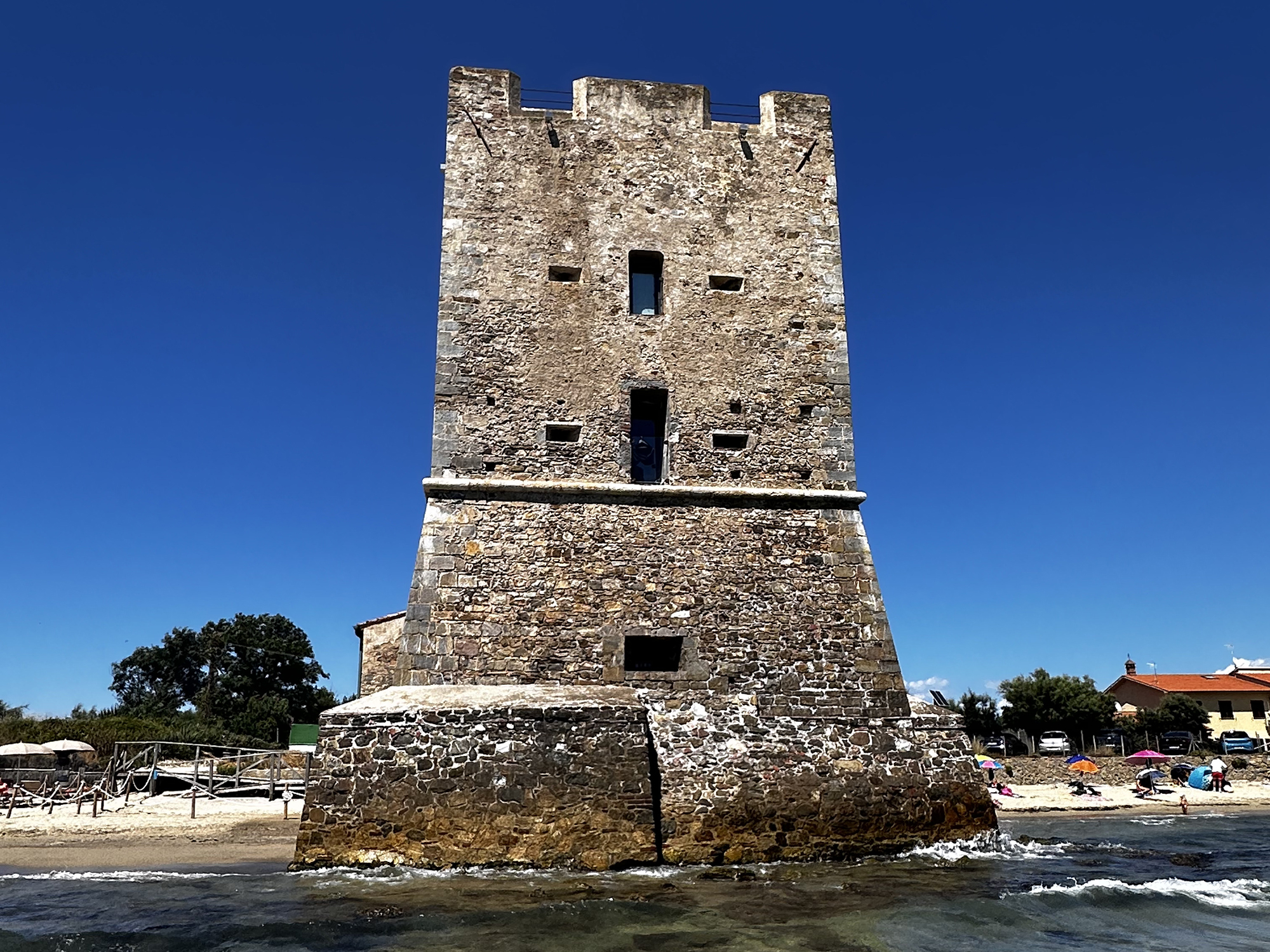
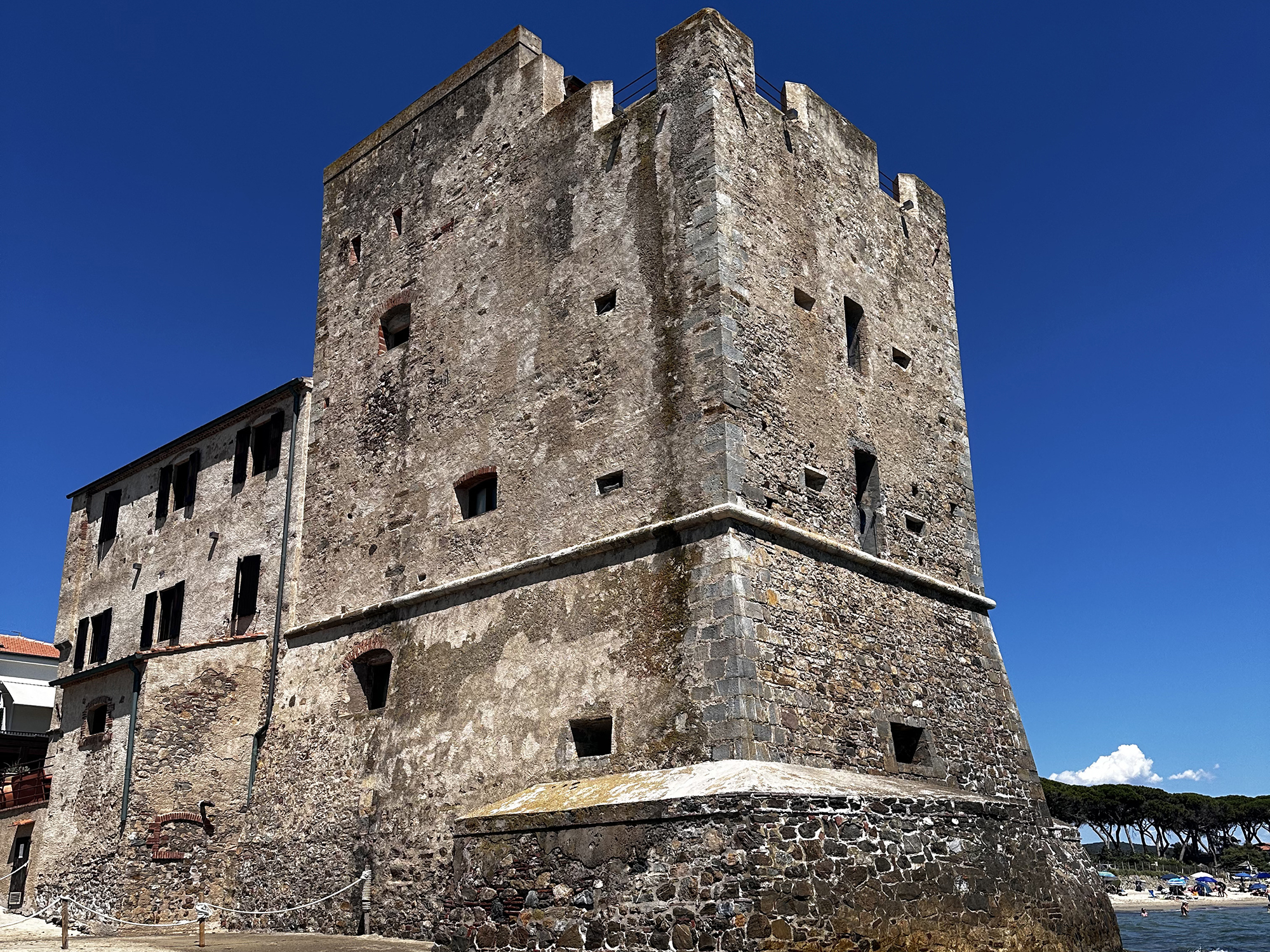
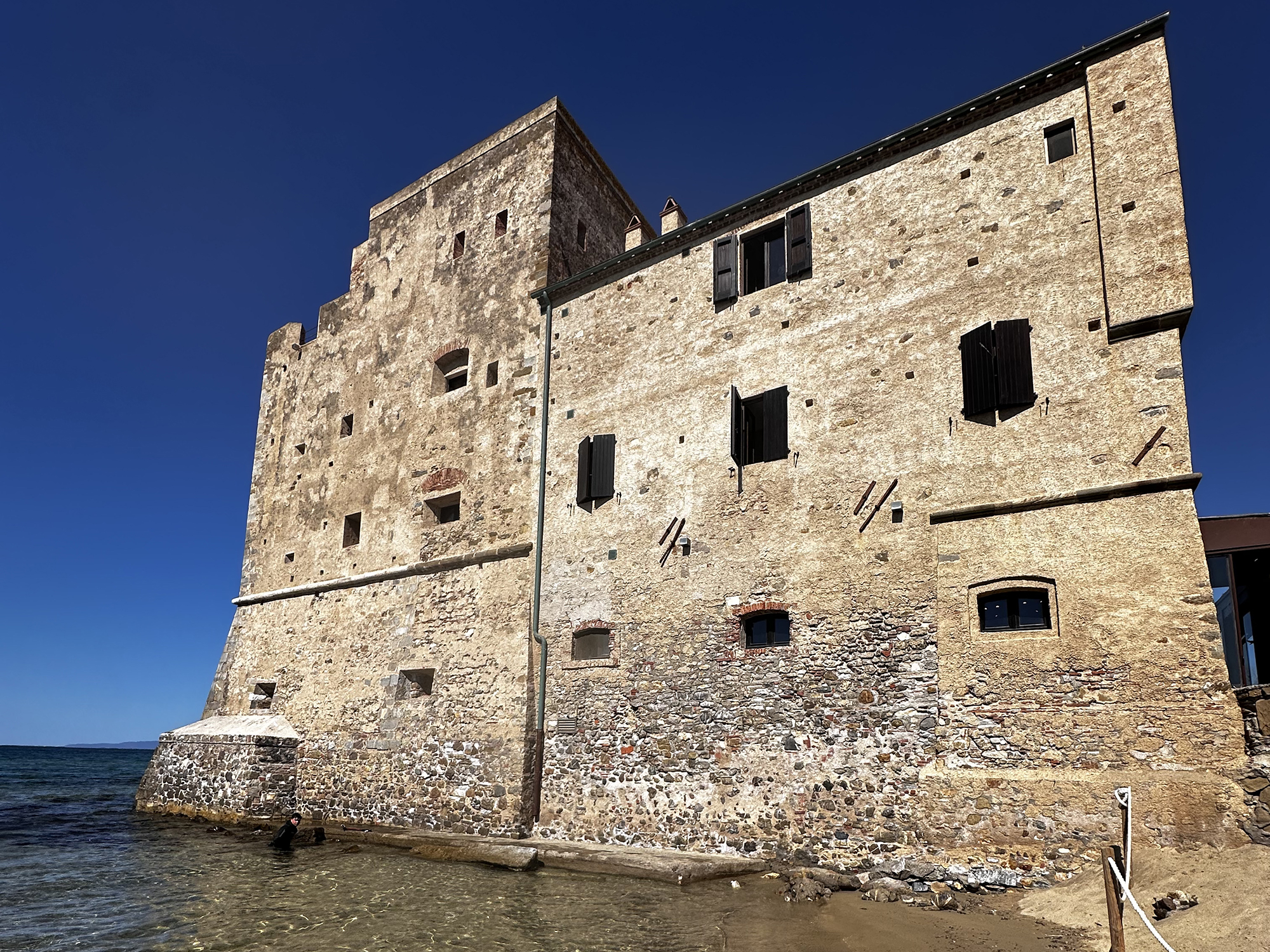
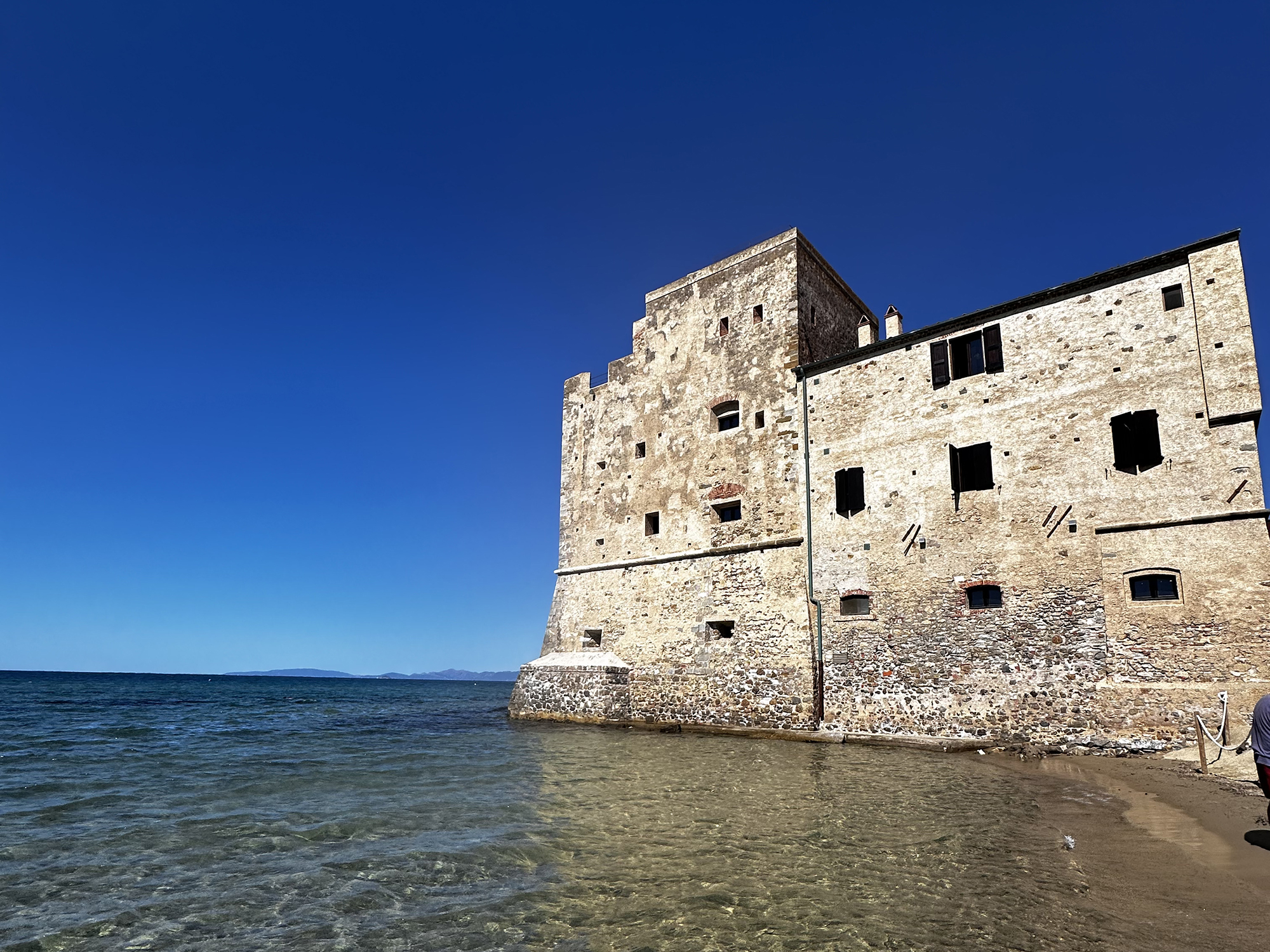
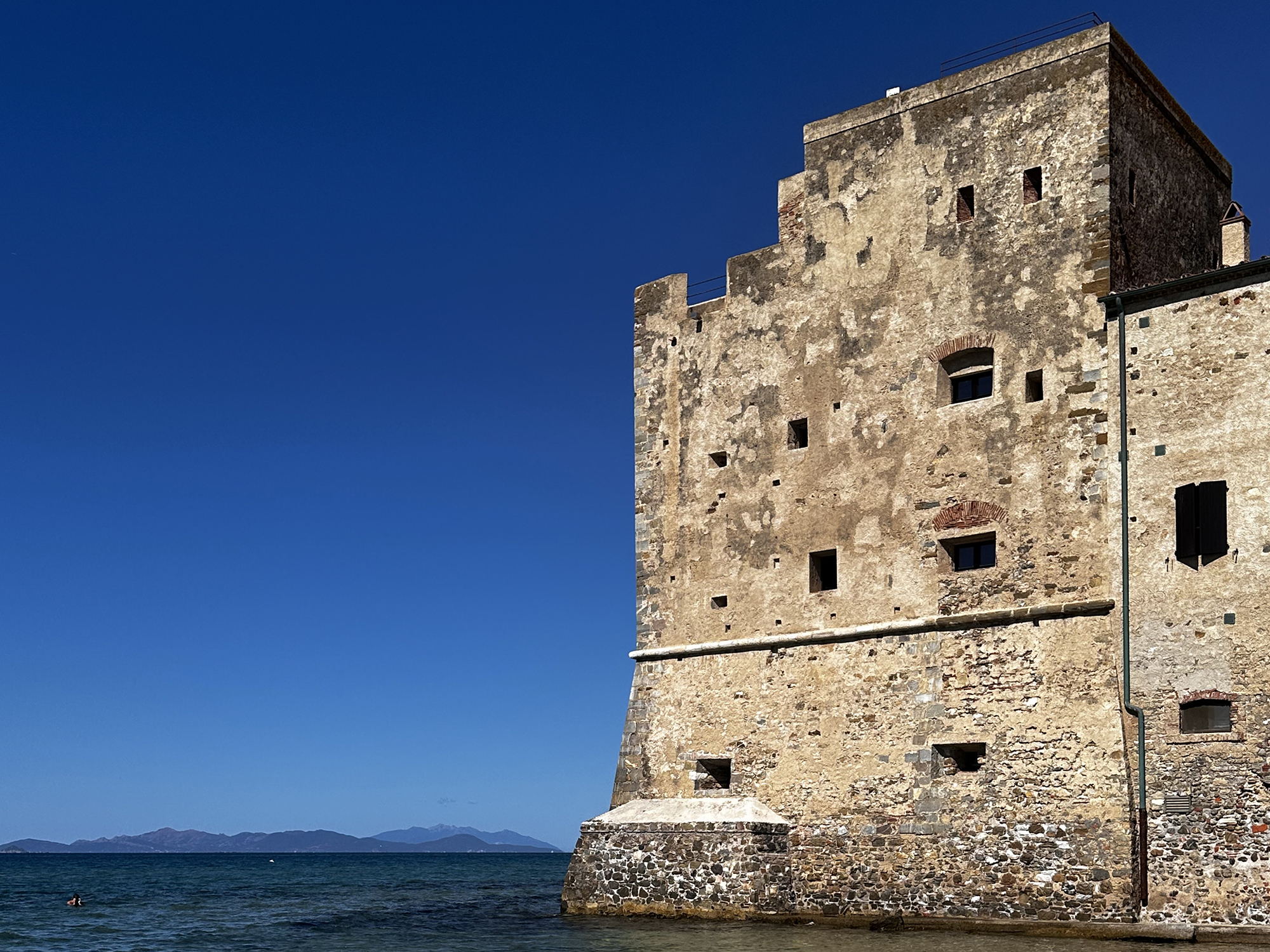
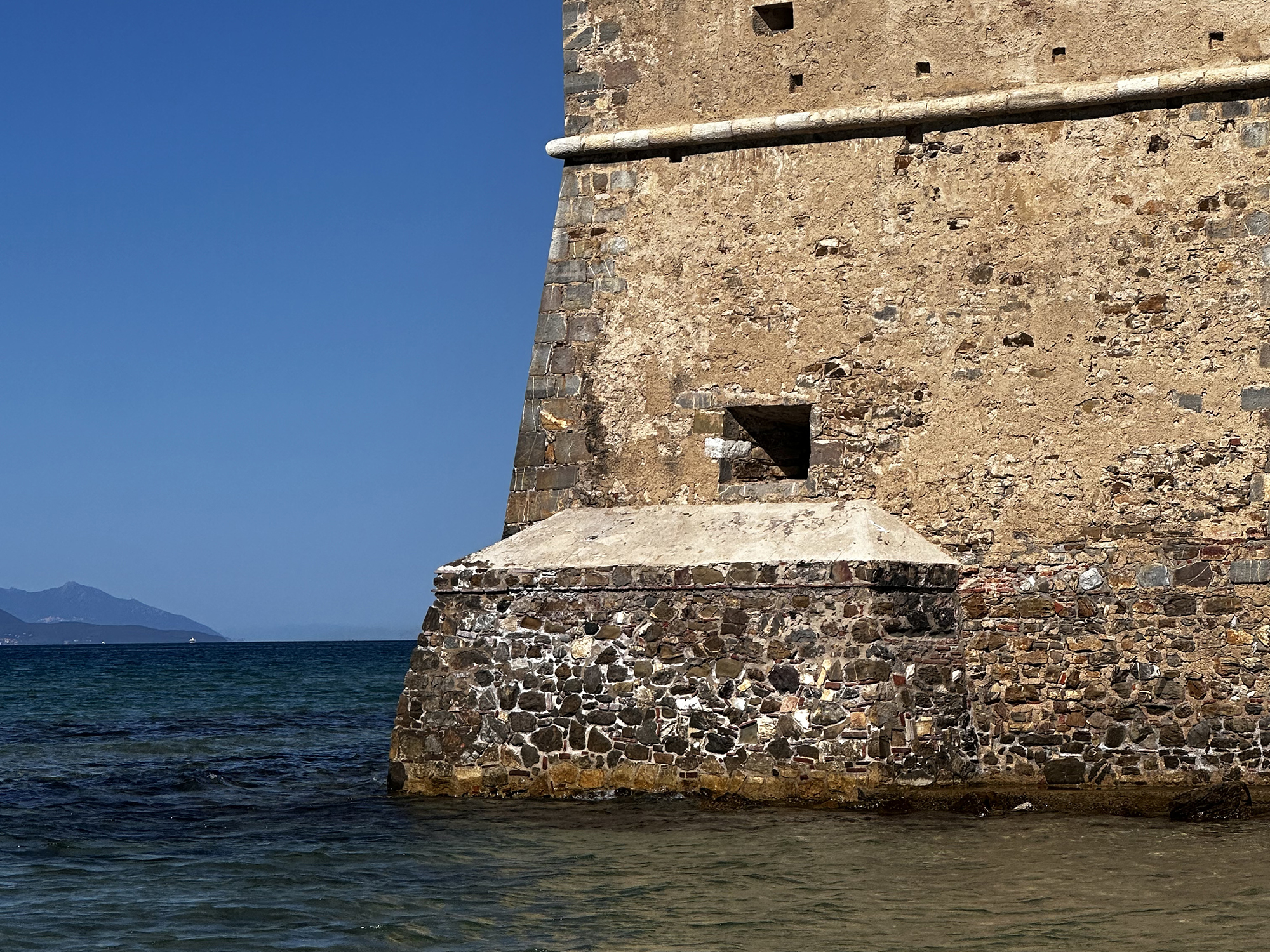






How to reach
Torre Mozza is located in the southern part of the municipality of Piombino, in a central position within the Gulf of Follonica, directly overlooking the sea. It can be easily reached from the SS1 Aurelia by following the signs from the Follonica Nord exit.
History
The building was erected around 1500 by the Appiani, lords of Piombino, directly overlooking the sea, a rare location among the Tuscan coastal towers. It responded to specific strategic and defensive needs within the system of coastal fortifications that ensured control over the Tyrrhenian shoreline. The tower had a dual function: to monitor vessels loaded with minerals coming from the Island of Elba and to defend the coast from frequent Saracen pirate raids. Later, it became part of the wider defensive system of the Grand Duchy of Tuscany, which integrated numerous towers and fortifications located along the coast.
The structure appears as a complex layout, consisting of three buildings constructed in successive phases. The original core is the watchtower, with a square plan and characterized by thick walls made of local stone, typical of coastal constructions from the first half of the 16th century. On the side facing inland, further parts were later added, eventually forming a small residence; an external staircase, still visible today, provides access to the different levels.
With the gradual change in defensive needs, the tower lost its original function. In modern times it was adapted for civilian and economic purposes, as evidenced by the construction of a small dock intended for the unloading of lignite, which highlights the role of the area also within local industrial activity.
A local legend attributes the presence of the semi-submerged reef about 20 meters from the coast to the remains of the Roman Via Aurelia (or the coastal Via delle Collacchie). However, archaeological excavations have placed it elsewhere. Historically, it is documented that the road ran further east on the mainland with a different orientation.
The flat rocky surface emerging along the shore is actually a beach rock probably dating back to the Roman era, a natural formation created by the cementation of sand with calcium carbonate as a result of coastal erosion processes, functioning as a natural barrier against waves. Beach rocks, widespread throughout the Mediterranean basin, were once used as building material but are now protected as they host biodiversity and defend the shoreline. Rather than archaeological remains, therefore, they are precious allies of nature.